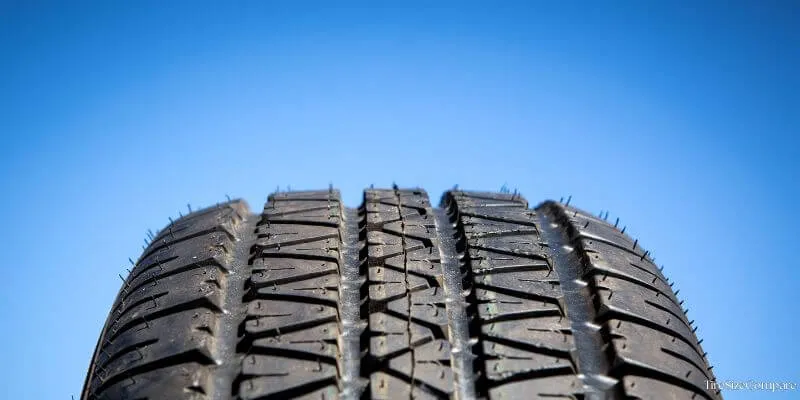33×9.5r15 in Metric
 Selecting the right tire size can often seem challenging, especially when trying to convert between imperial and metric units.
Selecting the right tire size can often seem challenging, especially when trying to convert between imperial and metric units.
This understanding is crucial for ensuring compatibility, performance, and safety. For those looking for a metric equivalent to the 33×9.50R15 tire, we’ve got you covered.
The closest metric equivalent is 235/85R17. We’ll explain how this conversion is made, explore alternatives, and provide expert observations to help you make the best decision.
Understanding Tire Size
Imperial tire sizes are commonly used in the United States, and breaking down the notation can help understand what each part means:
- Overall Diameter (33 inches): The first number, 33, represents the total height of the tire from the ground to the top of the tread.
- Tire Width (9.50 inches): The second number, 9.50, shows the width of the tire from sidewall to sidewall.
- Construction Type (R for Radial): The R indicates radial construction, the most common type of tire used today.
- Rim Diameter (15 inches): The final number, 15, specifies the diameter of the wheel the tire fits.
For example, the 33×9.50R15 tire is 33 inches tall, 9.5 inches wide, with radial construction, and fits a 15-inch rim. Understanding these details will help you compare to metric sizes and ensure proper fitment.

Closest Metric Equivalent
Finding the closest metric equivalent involves converting the tire’s height and width into millimeters and calculating the overall diameter. After these conversions, the 235/85R17 tire stands out as the closest match.
The 235/85R17 has an overall diameter of 32.73 inches, which is only -0.82% different from the 33×9.50R15. This close match ensures that handling, speedometer accuracy, and overall driving experience remain consistent.
While the width is slightly narrower at 9.25 inches, it remains within an acceptable range to be used as a replacement, providing similar on-road performance.
Alternatives to This Size
If you’re unable to find the 235/85R17 or are considering other options, there are a few alternatives that can also work well. Below is a comparison chart of some potential metric substitutes for the 33×9.50R15 tire, along with the diameter differences.
| Tire Size | Overall Diameter | Difference (%) |
|---|---|---|
| 33×9.5R15 | 33.00 | 0.00% |
| 235/85R17 | 32.73 | -0.82% |
| 245/75R18 | 32.47 | -1.61% |
These alternatives are viable options when the 235/85R17 isn’t available. They provide a slightly different overall diameter, which may affect your speedometer reading and ride height, but remain within an acceptable variance.

Selecting any of these options would still maintain safe handling characteristics, as long as they fit your wheel size and vehicle specifications.
33×9.5R15 Equivalent
The closest metric equivalent for the 33×9.5R15 is 235/85R17. This tire offers similar height and width, maintaining the handling and performance characteristics you’re accustomed to with minimal impact on vehicle dynamics.
How Tall is a 33×9.5R15 Tire?
The 33×9.5R15 tire has an overall height of 33 inches. This measurement is crucial for maintaining proper ground clearance and ensuring compatibility with your vehicle’s wheel wells.
How Wide is a 33×9.5R15 Tire?
The width of a 33×9.5R15 tire is 9.5 inches. This width determines how much of the tire’s surface area makes contact with the road, affecting traction and stability.
What Size Rim Fits a 33×9.5R15?
The 33×9.5R15 tire is designed to fit a 15-inch rim. It’s important to ensure your rim diameter matches the tire’s specifications to avoid any issues with installation or performance.
Our Observation
In our assessment, the 235/85R17 tire is an ideal match for the 33×9.50R15 for those seeking a metric equivalent. It offers a similar overall diameter, ensuring that your vehicle’s ride height and handling are not significantly altered.
Although the width is slightly narrower, it falls within an acceptable range, making it a practical option without the need for major modifications.
The main consideration is that the narrower width could marginally affect the contact patch, potentially leading to slight changes in traction, especially on wet surfaces. However, this difference is minor and would likely be unnoticed by the average driver.
We recommend consulting a tire professional to confirm compatibility before making any final decisions. Choosing the right tire involves considering your vehicle’s specifications, driving needs, and any adjustments that might be necessary to maintain safe handling characteristics.



